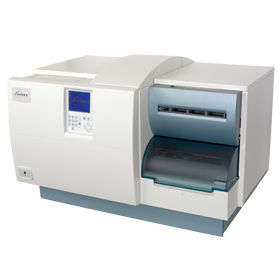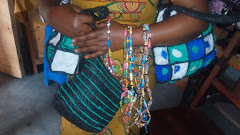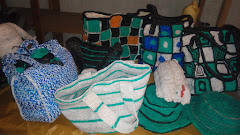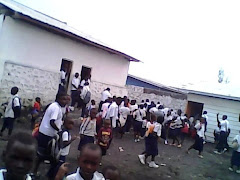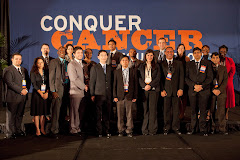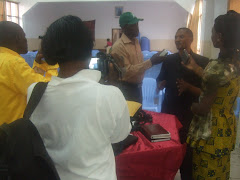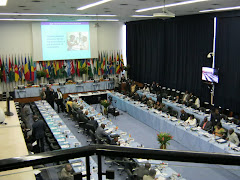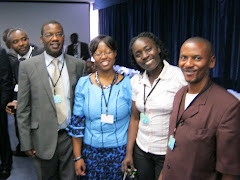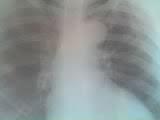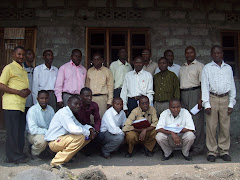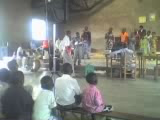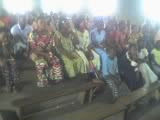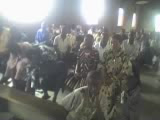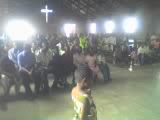RÉSULTATS DU SOMMET DES NATIONS UNIES SUR LES MALADIES NON TRANSMISSIBLES:
NOTES DESTINÉES AUX DÉFENSEURS DE LA LUTTE ANTITABAC
LES RÉSULTATS GÉNÉRAUX
1.La reconnaissance des maladies non transmissibles(MNT) et l’engagement en faveur d’une action mondiale de lutte contre ces dernières
Les quatre principales MNT(à savoir le cancer, le diabète, les maladies respiratoires chroniques et les maladies cardio-vasculaires) ainsi que les quatre facteurs de risque fréquemment associés (le tabagisme, l’usage nocif de l’alcool, une mauvaise alimentation et le manque d’exercice physique) ont fait l’objet de deux jours de discussion lors de l’Assemblée générale des Nations Unies. Des fonctionnaires de haut niveau de nombreux pays ont fait d’importantes déclarations et pris des engagements forts. La Déclaration politique de ce sommet constitue, à ce jour, l'appel à l'action le plus marquant jamais lancé en direction des gouvernements afin de les inciter à faire face à la crise des MNT.
2.Les mesures à prendre concernant les facteurs de risque des MNT et notamment le tabagisme
Au cours du sommet sur les MNT, l’accent a été mis sur la prévention en tant que « pierre angulaire » de la lutte contre les MNT en réduisant l’exposition aux facteurs de risque ainsi que les déterminants de ces maladies. En proposant l'accélération de la mise en œuvre de la Convention-cadre de l'OMS pour la lutte antitabac, la CCLAT (voir plus bas), les chefs d’États et de gouvernements se sont spécifiquement engagés en faveur de la réduction du tabagisme.
3.Un défi en matière de développement mondial
La Déclaration reconnaît que les MNT constituent «l’un des principaux défis pour le développement au XXIè siècle » et compromettent la réalisation les objectifs internationaux existant tels que les objectifs du Millénaire pour le développement (OMD).
4.La volonté politique comme élément essentiel du progrès
Il a été reconnu que pour assurer une prévention et une maîtrise efficaces des maladies non transmissibles, les gouvernements doivent adopter une démarche multisectorielle en faveur de la santé, y compris la prise en compte des questions de santé dans toutes les politiques et une approche concertée de tous les acteurs publics. Les chefs d’États et de gouvernements ont également reconnu qu’il convient de renforcer les capacités aux niveaux local, provincial, régional et national.
5.Le besoin de ressources supplémentaires
La Déclaration admet que les ressources consacrées à la lutte contre les maladies non transmissibles ne sont pas à la mesure de l'ampleur du problème. Bien que la communauté internationale toute entière se soit engagée à allouer des ressources supplémentaires, la Déclaration ne mentionne pas la nécessité d’investir des ressources nationales, d’utiliser des canaux bilatéraux et multilatéraux de financement et d’élaborer des approches de financement à long terme.
6.L’importance de l’aide publique au développement
Les chefs d’États et de gouvernements encouragent les gouvernements à prendre en compte les MNT dans les programmes et les initiatives de coopération pour le développement et demandent instamment aux organisations internationales de fournir une assistance technique et des services de renforcement des capacités en matière de MNT aux pays en développement.
7.Le rôle de la société civile
Les gouvernements prennent acte de la contribution et du rôle important des autres parties prenantes et notamment de la société civile, des milieux universitaires, des médias et, le cas échéant, du secteur privé.
LES RÉSULTATS EN MATIÈRE DE LUTTE ANTITABAC
Une déclaration politique des Nations Unies est considérée comme l’un des outils de promotion de l’action et de la coopération internationale les plus puissants du système des Nations Unies. Cette déclaration constitue par conséquent un instrument important pour promouvoir la mise en œuvre de la lutte antitabac et de la CCLAT au-delà du domaine de la santé, d'une part, et pour favoriser le recours à une approche concertée de tous les acteurs publics en matière de lutte antitabac, d'autre part.
1.Engagements envers LA MISE EN ŒUVRE ACCELEREE DE LA CCLAT
La Déclaration adoptée par les chefs d’États et de gouvernements demande aux Parties à la CCLAT d'intensifier leurs efforts en vue de se conformer aux dispositions du traité dans les délais impartis. Les défenseurs de la lutte antitabac disposent ainsi d’un argument de poids dans leurs discussions avec leurs partenaires gouvernementaux extérieurs aux ministères de la Santé.
2.La TAXATION DU TABAC mise en avant
En mentionnant spécifiquement la taxation du tabac comme étant une stratégie efficace, la Déclaration offre aux défenseurs de la lutte antitabac une occasion exceptionnelle d'inciter les ministères des Finances et d'autres acteurs extérieurs au secteur de la santé à mener une action au niveau national, occasion d’autant plus importante à l’approche des réunions du groupe de travail sur les directives pour l'application de l'Article 6 de la CCLAT(mesures financières et fiscales) et de COP5.
3.Les pays qui ne l'ont pas encore fait encouragés à ENVISAGER D'ADHERER A LA CONVENTION-CADRE DE L'OMS
La Déclaration des Nations Unies incite encore une fois les pays qui ne le sont pas à devenir partie à la CCLAT.
4.LE CONFLIT D'INTERETS FONDAMENTAL ENTRE L'INDUSTRIE DU TABAC ET LA SANTE PUBLIQUE reconnu.
La Déclaration renforce un point sans équivoque de la CCLAT: l’industrie du tabac n’a pas sa place dans l’élaboration de solutions de lutte contre l'épidémie de MNT. Les partenaires gouvernementaux(et autres) qui pensent encore que l’industrie du tabac constitue un interlocuteur légitime lors des discussions sur la santé publique devraient tenir particulièrement compte de ce point.
LES ACTIVITÉS DE SUIVI DU SOMMET
La Déclaration politique sur la prévention et la maîtrise des maladies non transmissibles contient quatre mesures de suivi assorties d’un calendrier adressées aux États membres, à l’OMS et au Secrétaire général des Nations Unies. Elles donnent aux défenseurs de la lutte antitabac l’occasion de promouvoir la mise en œuvre de la CCLAT.
1.Des plans nationaux relatifs aux MNT
La Déclaration engage les gouvernements à élaborer ou renforcer, d’ici à 2013, des politiques et des plans nationaux en matière de lutte contre les MNT fondés sur une approche multisectorielle. Il est fondamental que les plans nationaux relatifs aux MNT incluent la mise en œuvre de la CCLAT ainsi que les plans nationaux de lutte antitabac.
2.Les cibles et objectifs
Sous la houlette de l’OMS, les États membres ont jusqu’à la fin de 2012 pour mettre au point un cadre global mondial de suivi pour les MNT comprenant notamment une série d’indicateurs ainsi que des objectifs volontaires à l’échelle mondiale. Une liste préliminaire des objectifs devrait être examinée par les États membres en janvier 2012 à l’occasion du 130è Conseil exécutif de l’OMS. Les objectifs provisoires devraient être présentés et examinés lors de l’Assemblée de la Santé qui aura lieu en mai 2012. Il convient de promouvoir l’inclusion de la/des cible(s) en matière de politique de lutte antitabac aux objectifs plus vastes concernant les MNT. Une forte mobilisation en faveur de la lutte antitabac aux niveaux national et international sera nécessaire en amont du Conseil exécutif et de l'Assemblée de la santé.
3.L’établissement de rapports
La Déclaration charge le Secrétaire général des Nations Unies de présenter à l’Assemblée générale, à sa soixante-huitième session (2013-2014), un rapport sur les progrès réalisés dans la mise en œuvre des engagements souscrits dans la Déclaration politique. Il convient d’encourager les gouvernements à montrer clairement dans ce rapport les efforts consentis pour accélérer la mise en œuvre de la CCLAT. La mise en œuvre de la CCLAT devrait être présentée comme « la meilleure option » pour progresser dans la lutte contre les MNT.
4.Examen
Les chefs d’États et de gouvernements ont convenu qu’un examen et une évaluation d’ensemble des progrès réalisés en matière de prévention de de maîtrise des MNT aurait lieu en 2014. Les défenseurs de la lutte antitabac devraient considérer cet examen de 2014 comme un délai imparti pour réaliser les progrès nécessaires en matière d'accélération de la mise en œuvre de la CCLAT.
jeudi 27 octobre 2011
jeudi 7 juillet 2011
RAPPORT DE SENSIBILISATION SUR LA PREVENTION DU CANCER DU COL UTERIN: AU CENTRE DE SANTE VIRUNGA





RAPPORT DE SENSIBILISATION SUR LA PREVENTION DU CANCER DU COL UTERIN: AU CENTRE DE SANTE VIRUNGA
Contexte:
Dans le cadre de la journée internationale de l'enfant africain, AGIR ENSEMBLE a organisé une séance de sensibilisation sur la prévention du cancer du col utérin avec les mamans amenant les enfants à la vaccination. AGIR ENSEMBLE a profité de cette occasion pour expliquer aux mamans qu'il existe un vaccin contre le virus HPV (virus responsable du cancer du col) pour éviter cette maladie et que ce vaccin devrait être administré aux jeunes filles de 9-12 ans.
Cette activité a été rendue possible grâce à l'appui financier de l'OMS-sous bureau de Goma.
1. Introduction et Justification
Le cancer du col utérin est devenu un grand problème de santé dans le monde avec 493000 nouveaux cas de cancer du col utérin relevés annuellement dans le monde entier avec 274000 décès par an (plus de 50%) et 83% se trouvent dans les pays en voie de développement. En RDC, le cancer du col est la première cause des décès par cancer (source: GLOBOCAN-base des données de l’OMS). En RDC, le service n’est pas disponible, aucune structure sanitaire ne fait le screening et donc aucune femme n’a accès à ce service. Les projections de l’OMS montrent que si rien n’est fait à ce jour, ces chiffres risquent de doubler ou de tripler.
La séance s’est déroulée comme prévue le samedi 25 Juin 2011 au Centre de Sante Virunga et a connu la participation active des mamans ainsi que des infirmiers du centre avec une couverture médiatique de la Radio Kivu 1.
2. Objectifs
Les objectifs de cette sensibilisation étaient de:
a. réunir 50 mamans lors des CPN et/ou CPS qui recevront le message sur le screening et la cryothérapie.
b.avoir l’engagement d’au moins 75% de mamans sensibilisées à commencer le program de screening des que disponible a leur centre.
3. Activités réalisées
Une séance de sensibilisation de 3 heures à l’ intention des mamans venues aux CPS au centre de Santé Virunga. La sensibilisation a porté sur la méthode du screening et son importance pour la prévention totale du cancer du col utérin. Les sensibilisateurs ont commencé par expliquer aux mamans ce qu’est le cancer du col utérin, ses manifestations cliniques ainsi que sa gravité. Puis on est passé au programme de prévention (screening et traitement des lésions précancéreuses par cryothérapie).
4. Résultats atteints
A la fin de la séance:
a. Quatre vingt deux (82) mamans ont participé à la séance/cinquante attendues (50). Indicateur de succès= 82/50 = 164%
b. Quatre vingt deux (82) mamans de la ville de Goma/Q. Virunga ont compris l’importance du screening et cryothérapie pour la prévention du cancer du col utérin. Indicateur de succès = 164%
c. Toutes les mamans sensibilisées (100%) ont donné leurs engagements à adhérer au programme de screening des que disponible/ 75% attendues.
Indicateur de succès = 133%
NB: Cette activité a été un réel succès car elle a connu un engouement et les objectifs ont été atteints à plus de 100%.
5. Conclusions
-Les participantes ont été très intéressées du programme qui est tout a fait nouveau pour elles et elles se sont engagées a vite commencer le screening pour la prévention de cette maladie.
-Elles ont également accepté d’effectuer le déplacement vers Kigali en cas de résultat positif pour la cryothérapie en attendant que nos démarches aboutissent pour trouver la machine de cryothérapie.
Cette activité a démontré que le screening constitue un real besoin pour les mamans et qu’il faudra un engagement de tous pour sauver de vies menacées.
Fait à Goma, le 29 Juin 2011.
Dr Mateus K. Sahani/AGIR ENSEMBLE.
RAPPORT DE SENSIBILISATION SUR LA PREVENTION DU CANCER DU COL UTERIN: AU CENTRE DE SANTE VIRUNGA





Rapport de formation et workshop sur la prévention du cancer du col utérin: diagnostique et traitement des lésions précancéreuses.
Contexte
Au mois de Janvier 2011, AGIR ENSEMBLE a organisé une formation et un workshop a l’intention des médecins et infirmiers de la ville de Goma avec l’appui financier de l’UICC. Ces activités ont porté sur la prévention du cancer du col utérin: Diagnostic et traitement des lésions précancéreuses. Mais jusque la, nous n’avons pas la machine de cryothérapie, ce qui constitue un obstacle pour la mise en œuvre effective du programme de screening dans nos hôpitaux.
Justification
Le cancer est devenu la grande priorité de santé publique et tue plus que le HIV, Tuberculose et malaria mis ensemble. Il a été établi qu’il y a 28 millions des personnes atteintes du cancer dans le monde avec une prévalence de 12 millions chaque année et une mortalité de 8 millions chaque année.
Le cancer du col de l’utérus vient en 2e position dans le monde en ce qui concerne la mortalité et en 1ere position dans le pays en voie de développement. Il a été démontré que le cancer du col utérin peut être prévenu à 100% avec des moyens très simples: screening, traitement et vaccin anti-HPV.
Objectifs
1. Former 8 professionnels de santé (4 médecins et 4 infirmiers) en dépistage et traitement des lésions précancéreuses.
2. Tenir un «workshop» de 2 jours pour former 28 professionnels de santé en matière de screening et traitement des lésions précancéreuses pour la sensibilisation continue des mamans lors des séances de CPN et de vaccination.
Résultats atteints
A. Formation de 2 jours: 8 professionnels de santé ont été formés avec succès sur la matière susmentionnée dont 3 médecins et 5 infirmiers:
Tous les participants ont réussi le post-test avec plus de 76% et tous ont signé le feuillet d’engagement pour la lutte continue contre le cancer comme une grande priorité de santé publique.
Indicateur1: 3 médecins formés/4 attendus= 75%
Indicateur2: 5 infirmiers formés/4 attendus=125%
En bref, l’objectif a été atteint à 100% : 75+125 divisée par 2= 100%
A l’issue de cette formation 8 professionnels de santé de la ville de Goma sont maintenant compétents à réaliser le dépistage pour le cancer du col utérin et livrer le service aux mamans pour prévenir à 100% le cancer du col de l’utérus.
Un module de formation est disponible comme livre de référence pour les professionnels de santé. Il est vrai qu’il s’agit d’une nouvelle matière pour les professionnels de santé congolais et ce document va être une bonne source d’information pour le développement des
capacités.
B. Un workshop de 2 jours s’est tenu comme prévu et 25 professionnels de santé ont participé activement à ce workshop dont 5 médecins et 20 infirmiers.
Tous les participants ont été actifs dans les travaux en groupes et tous ont signé le feuillet d’engagement pour la lutte continue contre le cancer comme une grande priorité de santé publique.
Indicateur 1: 25 participants/28 attendus= 89.3%
Indicateur 2: 25 personnes ont participé activement à l’adoption du guide/ 25 attendus = 100%.
A l’issue du workshop, un guide du sensibilisateur vient d’être adopté et mis à la disposition des institutions de santé pour usage dans la sensibilisation continue des mamans pour qu’elles demandent le service de screening aux professionnels de santé. Cela permettra la disponibilité du service de screening et le plaidoyer pour la disponibilité du service de traitement (achat de machine de cryothérapie).
Tous les participants ont reçu chacun une copie du guide.
Pour ce workshop, un rappel de quelques sujets de formation a été donné notamment sur les démarches diagnostiques des lésions précancéreuses, le traitement par cryothérapie, l’épidémiologie et l’histoire naturelle du cancer du col utérin.
Ce rappel consiste à la mise en niveau des participants du workshop qui n’ont pas suivi la formation. Ainsi donc tous les participants à ce workshop sont aussi capables de pratiquer le screening et le traitement des lésions précancéreuses.
Les facilitateurs ont donné les orientations nécessaires pour le déroulement des travaux mais en gros les travaux se sont faits en groupes. Quatre groupes ont été formés dirigés chacun par 2 cadres qui ont suivi la première formation.
Ce programme va se poursuivre avec la sensibilisation dans 3 centres de santé de la ville de Goma pour informer les mamans de l’importance du screening pour prévenir à 100% le cancer du col utérin, leur permettre de demander le service de screening et d’adhérer au programme quand il est disponible.
NB: Le grand obstacle pour la mise en œuvre effective de ce programme est le manque des moyens pour le traitement des lésions précancéreuses: la machine de cryothérapie et cela doit être une matière de plaidoyer pour chacun de nous tous pour éviter aux mamans de faire de longues distances Goma-Kampala ou Goma-Kigali pour le traitement.
Fait à Goma, le 01 Février 2011
Dr Mateus KAMBALE SAHANI
Directeur du Département de Santé
AGIR ENSEMBLE/RDC.
jeudi 21 avril 2011
Sensitization of women on cervical cancer screening at Kahembe Health Center-Goma





SENSITIZATION OF WOMEN AT KAHEMBE HEALTH CENTER, March 19, 2011: EVENT REPORT
Cervical cancer screening: a method to prevent cervical cancer in 100% in our community.
I. Introduction
Cervical cancer is the leading cause of death by cancer in DRC, so screening and treatment of precancer is more important for women in DRC. After the training of health professionals held from January 8-9, 2011, we have to conduct sensitization campaign for the adherence of women to the program. Three sessions are planed for this campaign and this is the third session held in March 19, 2011 to sensitize women and take their commitment to be involved in cervical cancer prevention campaign and to take the test.
II. Duration of the event: 2 hours (08:00-10:00)
III. Objectives:
1. To Sensitize 20 women (who bring children to vaccination séance and who come to prenatal examination) on cervical cancer screening relevance for women and take their commitment to accept the test.
2. To give to all women who receive the message on cervical cancer screening relevance, the leaflets detailing all methods of cervical cancer prevention.
3. To mount a poster at the entry of the Health Facility carrying the message: Cancer can be prevented too
Cervical cancer screening and vaccination are very important for
women and young girls. Come for screening to this health center.
IV. Outcomes:
The total number of attendees was: 35 women.
At the end of the event:
1. Thirty five (35) women in the city of Goma/Kahembe (Birere) quarter were sensitized on cervical cancer screening relevance and 100% of them have committed to take the test.
Indicator1: 35 women have attended the event/20 expected= 175%.
2. Thirty five (35) women in the city of Goma/Kahembe quarter were sensitized on cervical screening relevance and 100% of them have received leaflets detailing cervical cancer prevention methods.
Indicator1: 35 women who attended the event have received leaflets/35 expected= 100%.
3. A poster has been mounted at the entry of the Health Facility carrying the expected message well readable. Indicator: 1 poster at the entry with the message/1 expected= 100%.
V. Other outcomes
1. All attendees have committed to raise awareness of their neighbors on tobacco smoking and cancer prevention using information in the leaflets given to them during the event.
2. All attendees have committed to raise awareness of their friends and members of family on cervical cancer screening and treatment to allow them adhering to the program.
3. All attendees have received the message that tobacco is a big health issue and must be fighted strongly.
VI. Organizing team:
1. Mateus Kambale Sahani, M.D: Manager and speaker
2. Pele Nzanzu Kikuhe, M.D: Speaker
3. Alphonse Paluku Kavwirwa, organizer.
4. Tshombe Desire, Moderator (nurse).
5. Mrs. Tungu Kahamwiti: speaker (nurse).
Recommendations
At the end of the event, attendees have given these recommendations:
-To look for financial support for the availability of cryotherapy and for the effectiveness of the screening. This will avoid long distance for women looking for cryotherapy,
-To distribute more leaflets to other women to allow them being aware of this program and then they can be stimulated to go to screening service.
-To support the Health Centers with materials for screening.
Done in Goma,
April 11, 2011.
Mateus Kambale Sahani, M.D.
AGIR ENSEMBLE-HEALTH DEPARTMENT.
Libellés :
Cancer can be prevented too.
mercredi 20 avril 2011
Sensitization of women on cervical cancer screening at Mugunga Health Center-Goma



SENSITIZATION OF WOMEN AT MUGUNGA HEALTH CENTER, March 04, 2011: EVENT REPORT
Cervical cancer screening: a method to prevent cervical cancer in 100% in our community.
I. Introduction
Cervical cancer is the leading cause of death by cancer in DRC, so screening and treatment of precancer is more important for women in DRC. After the training of health professionals held from January 8-9, 2011, we have to conduct sensitization campaign for the adherence of women to the program. Three sessions are planed for this campaign and this is the second session held in March 04, 2011 to sensitize women and take their commitment to be involved in cervical cancer prevention campaign and to take the test.
II. Duration of the event: 1 hour 30 minutes (08:00-09:30)
III. Objectives:
1. To Sensitize 20 women (who bring children to vaccination séance) on cervical cancer screening relevance for women and take their commitment to accept the test.
2. To give to all women who receive the message on cervical cancer screening relevance, the leaflets detailing all methods of cervical cancer prevention.
3. To mount a poster at the entry of the Health Facility carrying the message: Cancer can be prevented too
Cervical cancer screening and vaccination are very important for
women and young girls. Come for screening to this health center.
IV. Outcomes:
The total number of attendees was: 50 women.
At the end of the event:
1. Fifty (50) women in the city of Goma/Mugunga quarter were sensitized on cervical cancer screening relevance and 100% of them have committed to take the test.
Indicator1: 50 women have attended the event/20 expected= 250%.
2. Fifty (50) women in the city of Goma/Mugunga quarter were sensitized on cervical screening relevance and 100% of them have received leaflets detailing cervical cancer prevention methods.
Indicator1: 50 women who attended the event have received leaflets/50 expected= 100%.
3. A poster has been mounted at the entry of the Health Facility carrying the expected message well readable. Indicator: 1 poster at the entry with the message/1 expected= 100%.
V. Other outcomes
1. All attendees have committed to raise awareness of their neighbors on tobacco smoking and cancer prevention using information in the leaflets given to them during the event.
2. All attendees have committed to raise awareness of their friends and members of family on cervical cancer screening and treatment to allow them adhering to the program.
3. All attendees have received the message that tobacco is a big health issue and must be fighted strongly.
VI. Organizing team:
1. Mateus Kambale Sahani, M.D: Manager.
2. Obady Kambale Vitswamba, M.D: Speaker
3. Alphonse Paluku Kavwirwa, organizer.
4. Tshombe Desire, Moderator (nurse).
5. Mr. Paul Kiminu: speaker (nurse).
6. Mrs. Adele Kahindo Tasi: organizer
Recommendations
At the end of the event, attendees have given these recommendations:
-To hold many séances allowing to reach many women for the effectiveness of the program,
-To look for financial support for the availability of cryotherapy and for the effectiveness of the screening. This will avoid long distance for women looking for cryotherapy,
-To distribute more leaflets to other women to allow them being aware of this program and then they can be stimulated to go to screening service.
- To support the Health Centers with materials for screening.
Done in Goma,
March 07, 2011.
Mateus Kambale Sahani, M.D.
AGIR ENSEMBLE-HEALTH DEPARTMENT.
Libellés :
Cancer can be prevented too.
mardi 19 avril 2011
Sensitization of women on cervical cancer screening at Majengo Health Center




SENSITIZATION OF WOMEN AT MAJENGO HEALTH CENTER, February 19, 2011: EVENT REPORT
Cervical cancer screening: a method to prevent cervical cancer in 100% in our community.
I. Introduction
Cervical cancer is the leading cause of death by cancer in DRC, so screening and treatment of precancer is more important for women in DRC. After the training of health professionals held from January 8-9, 2011, we have to conduct sensitization campaign for the adherence to be good. Three sessions are planed for this campaign and this is the first one held in February 19, 2011 to sensitize women and take their commitment to be involved in cervical cancer campaign.
II. Duration of the event: 1 hour 30 minutes (08:00-09:30)
III. Objectives:
1. To Sensitize 20 women (who bring children to vaccination séance) on cervical cancer screening relevance for women and take their commitment to accept the test.
2. To give to all women who receive the message on cervical cancer screening relevance, the leaflets detailing all methods of cervical cancer prevention.
3. To mount a poster at the entry of the Health Facility carrying the message: Cancer can be prevented too
Cervical cancer screening and vaccination are very important for
women and young girls. Come for screening to this health center.
IV. Outcomes:
The total number of attendees was: 85 women.
At the end of the event:
1. Eighty five (85) women in the city of Goma/Majengo quarter were sensitized on cervical cancer screening relevance and 100% of them have committed to take the test.
Indicator1: 85 women have attended the event/20 expected= 425%.
2. Eighty five (85) women in the city of Goma/Majengo quarter were sensitized on cervical screening relevance and 100% of them have received leaflets detailing cervical cancer prevention methods.
Indicator1: 85 women who attended the event have received leaflets/85 expected= 100%.
3. A poster has been mounted at the entry of the Health Facility carrying the expected message well readable. Indicator: 1 poster at the entry with the message/1 expected= 100%.
V. Other outcomes
1. All attendees have committed to raise awareness of their neighbors on tobacco smoking and cancer prevention using information in the leaflets given to them during the event.
2. All attendees have committed to raise awareness of their friends and members of family on cervical cancer screening and treatment to allow them adhering to the program.
3. Two other Health facilities (Bethesda Hospital and SOS Survie Medical Center) have invited AGIR ENSEMBLE to hold the same event for the benefit of their covered population. These events will be planned later in April 2011.
4. All attendees have received the message that tobacco is a big health issue and must be fighted strongly.
VI. Organizing team:
1. Mateus Kambale Sahani, M.D: speaker.
2. Alphonse Paluku Kavwirwa, organizer.
3. Tshombe Desire, Moderator (nurse).
4. Mrs. Marry Kyahi Ngee: speaker (nurse).
Recommendations
At the end of the event, attendees have given some recommendations:
-To hold many séances allowing to reach many women for this program for its effectiveness,
-To look for financial support for the availability of cryotherapy and for the effectiveness of the screening. This will avoid long distance for women looking for cryotherapy,
-To distribute more leaflets to other women to allow them being aware of this program and then they can be stimulated to go to screening service.
Done in Goma,
February 28, 2011.
Mateus Kambale Sahani, M.D.
AGIR ENSEMBLE-HEALTH DEPARTMENT.
lundi 18 avril 2011
WHO Regional Consultation on the preparation for the Moscow Ministerial Meeting and the UN High Level Summit on Non Communicable Diseases.



WHO Regional Consultation on the preparation for the Moscow Ministerial Meeting and the UN High Level Summit on Non Communicable Diseases.
Event: AFRO Consultation meeting
Place: Brazzaville, Republic of Congo
Date: April 4-6, 2011.
Slogan: Uniting against NCDs, the time to act is now.
The meeting has been held as planned, all attendees arrived in Brazzaville on April 3, 2011. The meeting was scheduled in 2 phases:
1. The first two days (4-5 April 2011) were dedicated to a technical meeting whose focus was to prepare the Ministerial meeting which took place on 6 April 2011.
2. The Ministerial meeting which has been attended also by all the experts of the technical meeting.
At the second day of the technical meeting, a round table has been conducted by civil society organizations including American cancer society, UICC, ATCA for cancers and other organizations for other fields of NCDs. We have defended our position and the voice of cancer has been head. (See details in the meeting report pages 26-30).
At the end of all sessions, the Brazzaville declaration has been adopted and has 11 points:
1. In WHO African Region, cardiovascular diseases, diabetes, cancers, chronic respiratory diseases, haemoglobinopathies (in particular sickle cell disease), mental disorders, violence and injuries represent a significant development challenge;
2. Though not currently specified in the MDGs, NCDs form an essential part of the global, regional and national health and development agendas;
3. Heads of states and Government shall provide leadership through the participation of all government sectors, as well as partnership with civil society and community in NCDs prevention and control. The Heads of state and government should also promote good governance to prevent conflict and disruption of health services;
4. National health information systems should be strengthened and standardized to generate disaggregated data on NCDs, their risk factors and determinants and monitor their magnitude, trends, and impact;
5. Information sharing on NCDs using all appropriate means including information and communication technologies should be promoted and intensified to increase health awareness and empowerment of individuals, families and communities;
6. NCDs prevention and control strategies, guidelines, legislations, regulatory frameworks including the WHO FCTC, shall be developed and implemented to protect individuals, families and communities from unhealthy diets, harmful use of alcohol, tobacco use and exposure to tobacco smoke, food safety, prevention of violence and injuries and advertising of unhealthy products;
7. National health systems should be oriented towards the promotion and support of healthy lifestyles by individuals, families and communities within the primary health care context in order to effectively respond to complex social, cultural and behavioral aspects associated with NCDs;
8. Health systems should be further strengthened with appropriate attention to inter alia: health financing, training and retention of the health workforces; procurement and distribution of medicines, vaccines, medical supplies and equipment; improving infrastructure; and, evidence-based and cost-effective service delivery for NCDs. There is need to advocate for the integration of health in all policies across sectors in order to address NCD risk factors and determinants;
9. The management of communicable diseases in many countries including Global health initiatives can provide ample opportunities to accelerate prevention and control of NCDs. Such opportunities should be identified and harnessed to address integrated care in the context of primary health care and health systems strengthening;
10. Partnership, alliances and networks bringing together national, regional and global players including academic and research institutions, public and private sectors, and civil society shall be encouraged and supported in order to collaborate in NCD prevention and control and to conduct innovative research relevant to the African context;
11. Financial resources that are commensurate to the burden of NCD should be allocated from the national budgets to support NCD primary prevention and case management using primary health care approach and establish sustainable innovative and new financing mechanisms at national and international levels.
PARTICIPANTS HAVE COMMITTED;
12. To develop integrated national NCD actions plans and strengthen institutional capacities for NCD prevention and control;
URGE;
13. The United Nations to include NCDs prevention and management in all future Global development goals;
14. World Health Organization, partners and civil society organizations to provide technical support to Member states, for implementation, monitoring and evaluation of recommendations contained in this Declaration, and to support a process of peer review and experience sharing among member states;
15. Development partners and civil society organizations to provide new and substantive financial resources to address NCDs, while not jeopardizing current and future funding of communicable diseases;
16. Heads of state and government of the WHO Africa region to endorse this deflation and to present it at the United Nations High Level Summit on NCDs as the position of Region on NCDs;
17. The United Nations Secretary General to establish a mechanism to monitor progress of the commitments to be made at the United Nations High Level Summit in September 2011;
18. The Regional Director of WHO in the African region to include in the agenda of the Regional Committee of 2012 discussion on the regional NCDs strategic plan and report on the progress made on the implementation of this declaration to the Regional Committee in 2014.
Done in Brazzaville, Republic of Congo
April 6th, 2011.
Dr Mateus Kambale Sahani
AGIR ENSEMBLE/DRC
Libellés :
agissons ensemble pour notre promotion.
mercredi 13 avril 2011
2011-annee decisive pour les MNT
| Bonjour, L'annee 2011 s'annonce decisive pour la lutte contre les MNT. Une rencontre de consultation s'est tenue au siege du bureau regional de l'OMS AFRO dans le cadre de la preparation de la reunion des ministres de Moscou ce mois d'Avril et du sommet de haut niveau des NU a New York. Les 4 grands groupes des maladies (Maladies cardiovasculaires, Cancers, Diabete, Maladie respiratoires chroniques) ont ete discutes et quelques autres problemes prioritaires de sante ont ete ajoutes specifiquement pour l'Afirque: maladies mentales, les traumatismes, les violences, les hemoglobinopathies. A la phase actuelle, il faut le dynamisme de chaque acteur pour pousser la lutte contre les MNT dans son pays. Merci, Dr Mateus Kambale Sahani Agir Ensemble/RDC. --- En date de : Lun 11.4.11, sahani kambale <kambalesahani@yahoo.fr> a écrit :
|
jeudi 24 février 2011
Conference d'information sur le cancer du sein et du col uterin a Goma





En date du 22 Fevrier 2011, AGIR ENSEMBLE a organise une conference d'information sur le cancer du sein et du col uterin au profit des professionnels de sante et de la population de la ville de Goma. Cette conference etait une suite des activites debutees lors de la journee internationale contre le cancer le 04 Fevrier 2011.
La conference a connu la participation des medecins, infirmiers, etudiants en medecine ainsi d'autres personnes interessees. Le total de participants etait de 96 dont 62 de sexe feminin et 34 de sexe masculin.
Il y a eu 3 orateurs de la conference dont:
1. Dr Mateus Kambale Sahani, cancer du col uterin.
2. Dr Luc Malemo, cancer du sein.
3. Dr Hangi, cancer du sein.
Cet evenement a ete couvert par les medias: radio et television tant locales que nationales.
Merci,
Dr Mateus Kambale Sahani
Libellés :
agissons ensemble pour notre promotion
samedi 12 février 2011
Cervical Cancer initiative and AGIR ENSEMBLE: Training of Health Professionals





Rapport de formation and workshop sur la prévention du cancer du col utérin: diagnostique et traitement des lésions précancéreuses.
Justification
Le cancer est devenu la grande priorité de santé publique et tue plus que le HIV, Tuberculose et malaria mis ensemble. Il a été établi qu’il y a 28 millions des personnes atteintes du cancer dans le monde avec une prévalence de 12 millions chaque année et une mortalité de 8 millions chaque année.
Le cancer du col de l’utérus vient en 2e position dans le monde en ce qui concerne la mortalité et en 1ere position dans le pays en voie de développement. Il a été démontré que le cancer du col utérin peut être prévenu à 100% avec des moyens très simples: screening, traitement et vaccin anti-HPV.
Objectifs
1. Former 8 professionnels de santé (4 médecins et 4 infirmiers) en dépistage et traitement des lésions précancéreuses.
2. Tenir un «workshop» de 2 jours pour former 28 professionnels de santé en matière de screening et traitement des lésions précancéreuses pour la sensibilisation continue des mamans lors des séances de CPN et de vaccination.
Résultats atteints
A. Formation de 2 jours: 8 professionnels de santé ont été formés avec succès sur la matière susmentionnée dont 3 médecins et 5 infirmiers:
Tous les participants ont réussi le post-test avec plus de 76% et tous ont signé le feuillet d’engagement pour la lutte continue contre le cancer comme une grande priorité de santé publique.
Indicateur1: 3 médecins formés/4 attendus= 75%
Indicateur2: 5 infirmiers formés/4 attendus=125%
En bref, l’objectif a été atteint à 100% : 75+125 divisée par 2= 100%
A l’issue de cette formation 8 professionnels de santé de la ville de Goma sont maintenant compétents à réaliser le dépistage pour le cancer du col utérin et livrer service aux mamans pour prévenir à 100% le cancer du col de l’utérus.
Un module de formation est disponible comme livre de référence pour les professionnels de santé. Il est vrai qu’il s’agit d’une nouvelle matière pour les professionnels de santé congolais et ce document va être une bonne source d’information pour le développement des capacités.
B. Un workshop de 2 jours s’est tenu comme prévu et 25 professionnels de santé ont participé activement à ce workshop dont 5 médecins et 20 infirmiers.
Tous les participants ont été actifs dans les travaux en groupes et tous ont signé le feuillet d’engagement pour la lutte continue contre le cancer comme une grande priorité de santé publique.
Indicateur 1: 25 participants/28 attendus= 89.3%
Indicateur 2: 25 personnes ont participé activement à l’adoption du guide/ 25 attendus = 100%.
A l’issue du workshop, un guide du sensibilisateur vient d’être adopté et mis à la disposition des institutions de santé pour usage dans la sensibilisation continue des mamans pour qu’elles demandent le service de screening aux professionnels de santé. Cela permettra la disponibilité du service de screening et le plaidoyer pour la disponibilité du service de traitement (achat de machine de cryothérapie).
Tous les participants ont reçu chacun une copie du guide.
Pour ce workshop, un rappel de quelques sujets de formation a été donné notamment sur les démarches diagnostiques des lésions précancéreuses, le traitement par cryothérapie, l’épidémiologie et l’histoire naturelle du cancer du col utérin.
Ce rappel consiste a la mise en niveau des participants du workshop qui n’ont pas suivi la formation. Ainsi donc tous les participants à ce workshop sont aussi capables de pratiquer le screening et le traitement des lésions précancéreuses.
Les facilitateurs ont donné les orientations nécessaires pour le déroulement des travaux mais en gros les travaux se sont faits en groupes. Quatre groupes ont été formés dirigés chacun par 2 cadres qui ont suivi la première formation.
Ce programme va se poursuivre avec la sensibilisation dans 6 centres de santé de la ville de Goma pour informer les mamans de l’importance du screening pour prévenir a 100% le cancer du col utérin, leur permettre de demander le service de screening et d’adhérer au programme quand il est disponible.
NB: Le grand obstacle pour la mise en œuvre effective de ce programme est le manque des moyens pour le traitement des lésions précancéreuses: la machine de cryothérapie et cela doit être une matière de plaidoyer pour chacun de nous pour éviter aux mamans de faire de longues distances Goma-Kampala pour le traitement.
Fait à Goma, le 01 Février 2011
Dr Mateus KAMBALE SAHANI
Directeur du Département de Santé
AGIR ENSEMBLE.
Libellés :
agissons ensemble pour notre promotion
jeudi 10 février 2011
World Cancer Day 2011 in Goma





WORLD CANCER DAY 2011 EVENT REPORT
World Cancer Day 2011: Involve men in cervical cancer screening for their wives.
I. Introduction
Cervical cancer is the leading cause of death by cancer in DRC, so screening and treatment of precancer is more important for women in DRC. During the training of health care providers held from January 8-9, 2011, many of participants have identified another challenge for the program to be successful: if male partners are not associated to the decision of screening for their wives, the adherence will not be good.
So, during the world cancer day, we planed to hold a scientific debate with teachers of “Complexe Scolaire KATASOHIRE” to sensitize them and take their commitment to be involved in cervical cancer campaign.
II. Duration of the event: 4 hours (12:00-16:00)
III. Objectives:
1. Sensitize 20 men (teachers of Complexe Scolaire KATASOHIRE) on cervical cancer screening relevance for women and take their commitment to release their spouses for the test.
2. Sensitize 10 women (teachers of Complexe Scolaire KATASOHIRE) on cervical cancer screening relevance and take their commitment to accept the test.
IV. Outcomes:
The total number of attendees was: 22 (16 men and 6 women).
At the end of the event:
1. Sixteen (16) men teachers in the city of Goma were sensitized on cervical cancer screening relevance and 100% of them have committed to release their spouse for screening when it is available.
Indicator1: 16 men teachers have attended the event/20 expected= 80%
Indicator2: 16 men teachers have committed to release their spouse for screening/16 expected= 100%.
2. Six (6) women teachers in the city of Goma were sensitized on cervical screening relevance and 100% of them have committed to accept the test when it is available.
Indicator1: 6 women teachers have attended the event/10 expected= 60%
Indicator2: 6 women teachers have committed to accept the test/6 expected= 100%.
V. Other outcomes
1. All attendees have committed to raise awareness of their pupils on tobacco smoking and cancer prevention using the books given to them during the event.
2. All attendees have committed to raise awareness of their friends and members of family on cervical cancer screening and treatment to allow them adhering to the program.
3. Another school (Majengo Institute) has invited AGIR ENSEMBLE to hold the same event for the benefit of its teachers. This event is planned on February 19, 2011.
VI. Organizing team:
1. Mateus Kambale Sahani, M.D: Speaker
2. Alphonse Paluku Kavwirwa, Moderator
3. Tshombe Desire, organizer.
Recommendations
At the end of the event, attendees have given some recommendations:
-To hold a large campaign for this program for the effectiveness of the program,
-To look for financial support for the availability of cryotherapy and for the effectiveness of the screening,
-To distribute the educational materials to other schools to allow them being able to raise awareness of this program.
- All attendees have been received the message that tobacco is a big health issue and must be fighted strongly.
NB: We would like to receive the materials of cancer campaign to allow us covering more people in Goma.
Done in Goma,
February 7, 2011
Mateus Kambale Sahani, M.D.
AGIR ENSEMBLE-HEALTH DEPARTMENT.
lundi 17 janvier 2011
Cervical Cancer initiative and AGIR ENSEMBLE



Cervical Cancer initiative and AGIR ENSEMBLE
AGIR ENSEMBLE has organized a training in diagnostic of cervical precancerous lesions (VIA and VILI) and treatment (Cryotherapy) in the city of Goma/DRC from January 8-9/2011 at BUNGWE Hotel.
This kind of event is the first in our country and also in the great lake region (DRC, Rwanda, and Burundi). We have trained 8 health professionals (doctors and nurses) to give them the necessary skills in diagnostic and treatment of precancerous lesions.
This program is supported by UICC and will continue for 6 month as a Cervical Cancer Prevention Campaign.
A workshop is scheduled in a few days from January 22-23, 2011 and has the am of making available a guideline to allow nurses to sensitize women to adhere to the program.
This program is technically supported by the North Kivu Provincial Health Division and health facilities (Hospitals and Health centers) of the city of Goma.
The big challenge for this program is that we don’t have the cryotherapy machine for treatment of precancer and we make a call to any one who could help million of women in this great lake region to have access to treatment to avoid them developing cervical cancer, which is now a 100% preventable disease.
Thank you,
Mateus K. Sahani, M.D.
AGIR ENSEMBLE-HEALTH DEPARTMENT.
Inscription à :
Articles (Atom)









